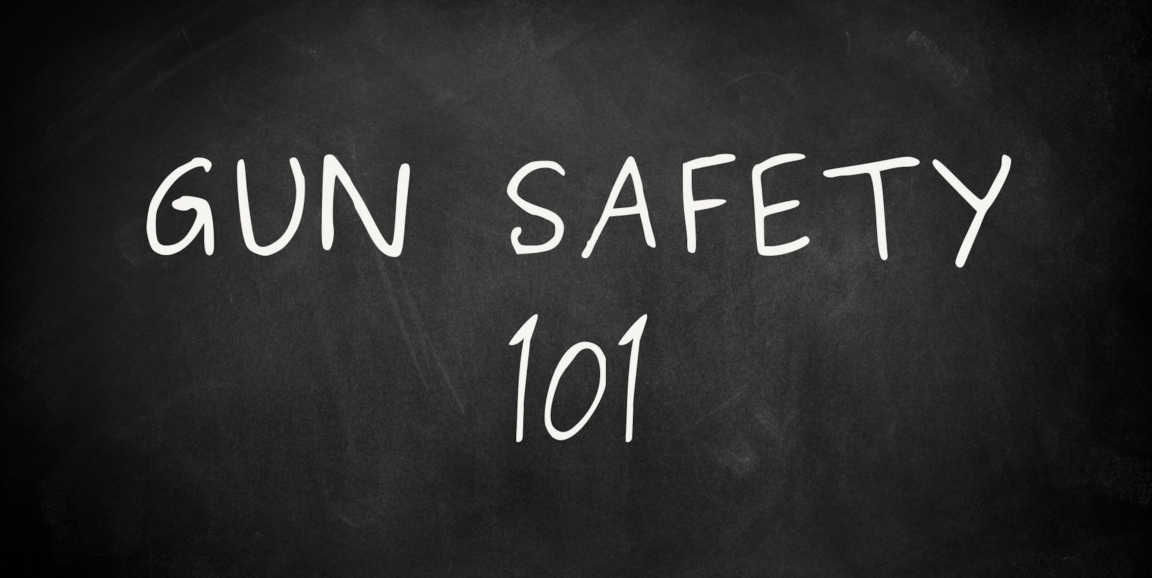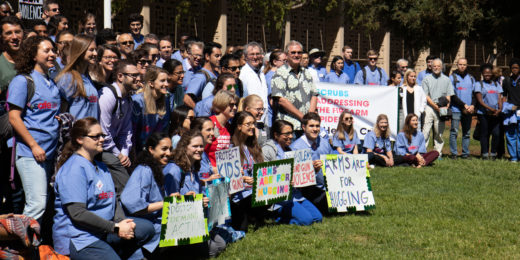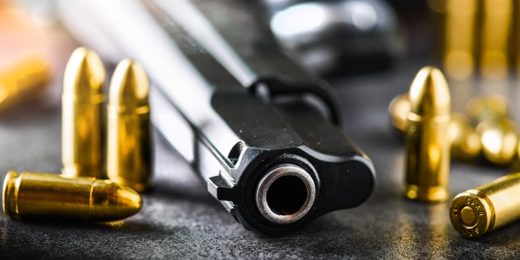Dean Winslow, MD, a professor of medicine since 1998, deployed to Iraq and Afghanistan six times since Sept. 11, 2001. It was during these deployments, more than 11 years ago, that he saw first-hand how devastating gun injuries are -- especially those from assault weapons.
Winslow became increasingly concerned about the proliferation of semiautomatic assault weapons and mass shootings in the United States after his time in the Air Force. In 2017, two days after the Sutherland Springs mass shooting, during his senate confirmation hearing for assistant secretary of defense for health affairs, Winslow told Senator Jeanne Shaheen of New Hampshire that he thought it was "insane" to sell semiautomatic assault weapons to civilians. Because of this statement his confirmation was put on indefinite hold by Senator John McCain of Arizona, until Winslow withdrew his name about a month later.
For the past three years, Winslow and Julie Parsonnet, MD, professor of medicine and of epidemiology, have worked on an online, self-paced course called Clinicians and Firearms. Medical student Christina Cantwell of UC Irvine and Deniz Cataltepe, MD, medical student at Icahn School of Medicine, helped develop the course material while partnering with Stanford Medicine. The aim is to promote education for clinicians, teaching how to reduce firearm injuries and deaths, including tips on how to talk to patients about safe storage and temporary removal of firearms from the home during times of high risk.
The course launched in 2021 and is continually updated.
"We're dealing with a huge public health problem," said Winslow. "We've controlled tuberculosis and HIV as major causes of death. We're not cutting it with guns -- we've let it become the leading cause of death in children ages one to 18."
Safety as a matter of fact
In the U.S., physicians rank high in credibility, acting as a trusted source of information for the average person, Winslow said. Winslow saw an opportunity to leverage that perspective to improve patient care. In 2018, he and Parsonnet partnered with then Stanford School of Medicine student Sarabeth Spitzer, MD, to form Scrubs Addressing the Firearms Epidemic, or SAFE, a nonprofit for U.S. physicians that aims to promote gun safety education, research and policies. SAFE members created and administer the Clinicians and Firearms course.
"As respected members of their communities, physicians can turn the tides in a public campaign," Winslow said. "Doctors have played a big role in changing culture around things that may be deleterious like drinking, smoking and distracted driving."
Acknowledging and mitigating the risks of gun-related accidents and injuries are important when it comes to gun ownership, but most people aren't as vigilant as they need to be, said Parsonnet, who is the George DeForest Barnett Professor of Medicine. "We live in a society in which guns are a fact of life. But we are not living in a society in which gun safety is a fact of life. Nor have we made a real commitment to making the ownership of guns a big responsibility."
The importance of safety is underrated, Parsonnet said. Currently, fewer than 30 of the approximately 150 medical schools in the U.S. feature education on gun violence or harm reduction. So far, more than 400 individuals or groups have enrolled in the course since its launch in 2021.
The course has three modules that cover firearm education and harm reduction. The first module explores the data of firearm-related injuries. The second defines the anatomy and types of firearms and ammunition and the injuries that result from them so that physicians can speak with credibility to gunowners. The third discusses firearm safety and how to have that conversation with patients, particularly when there are toddlers in the home or when someone has clinical depression.
The course recommends doctors share gun safety measures, such as safe storage of firearms. While making such suggestions, Winslow said, doctors could also ask if a patient's gun is locked and unloaded.
Hitting home
Eunice Chen, MD, a clinical assistant professor, was motivated to take the course after a recent mass shooting that happened in Half Moon Bay, California, where she lives, during Lunar New Year, a holiday she celebrates. She said it really brought home how mass shootings and gun fatalities have reached a crisis point.
"Gun violence has become an escalating public health threat," Chen said. "Health care providers need to educate themselves and patients about firearm safety in an effort to reduce preventable harms, including death."
She most appreciated the module about the fundamentals of guns -- she had limited knowledge about the basic mechanics of firearms and had never handled a gun.
"Discussing firearm ownership and safety is an uncomfortable subject for many clinicians," Chen said.
After taking the class, Chen said she would pay even more attention to her elderly patients. She was surprised to find such a high rate of suicide among elderly men with depression and loneliness, as well as other firearm-related injuries in patients with dementia.
Doctors as messengers
Forty-five thousand Americans died by gunshot in 2020 in the U.S. The tragedy has an enormous ripple effect, said Winslow, including post-traumatic stress disorder among survivors.
To address the epidemic, as a former senior associate dean for medical education, Parsonnet has been working with curriculum committees at Stanford Medicine and beyond to integrate the course training not just in the medical school education but also residencies across the nation. Six months ago, the course was also approved as a continuing medical education course, geared toward providers post-medical school who want to stay apprised on the latest developments in the field.
Currently, anyone can take the course for free. The second version will be available at the end of this spring quarter, with more interactivity, videos and written materials.
"We must address the reality that gun ownership is a part of our culture in this country," Parsonnet said. "But we need to carefully engage with that culture to diminish injuries and deaths."
Photo by Hanae Armitage






